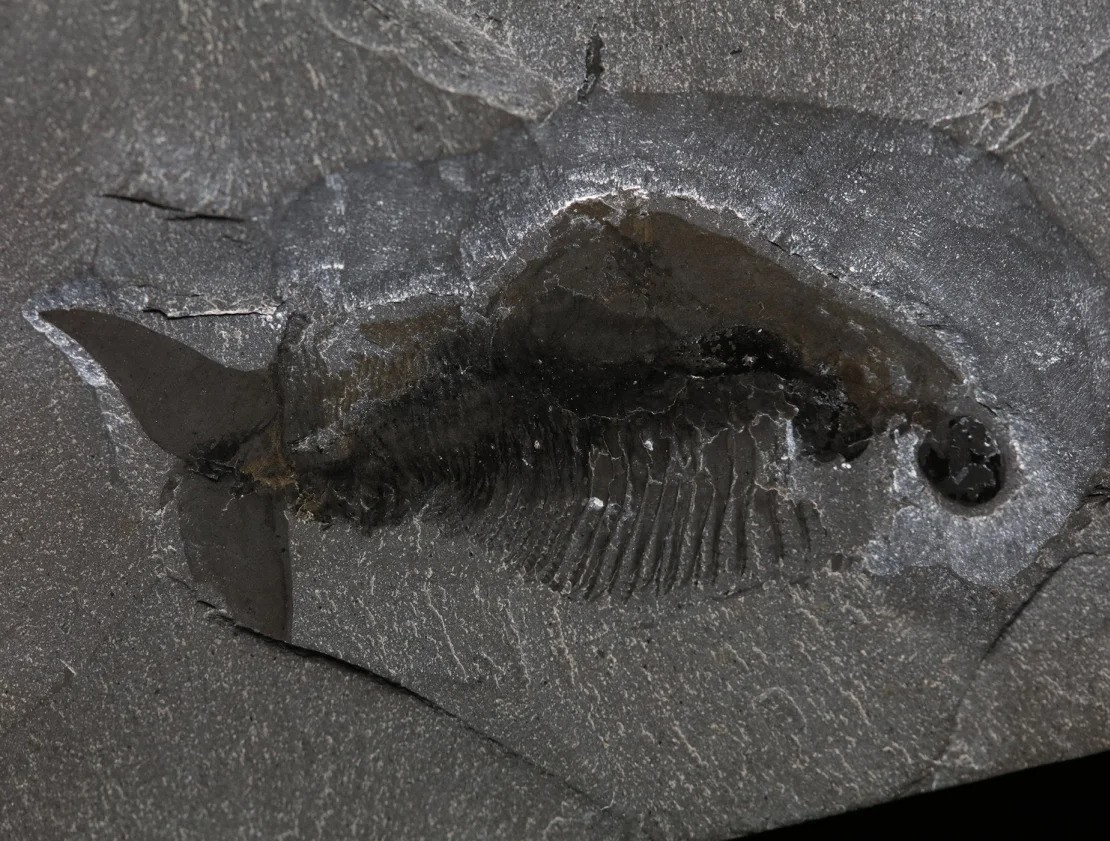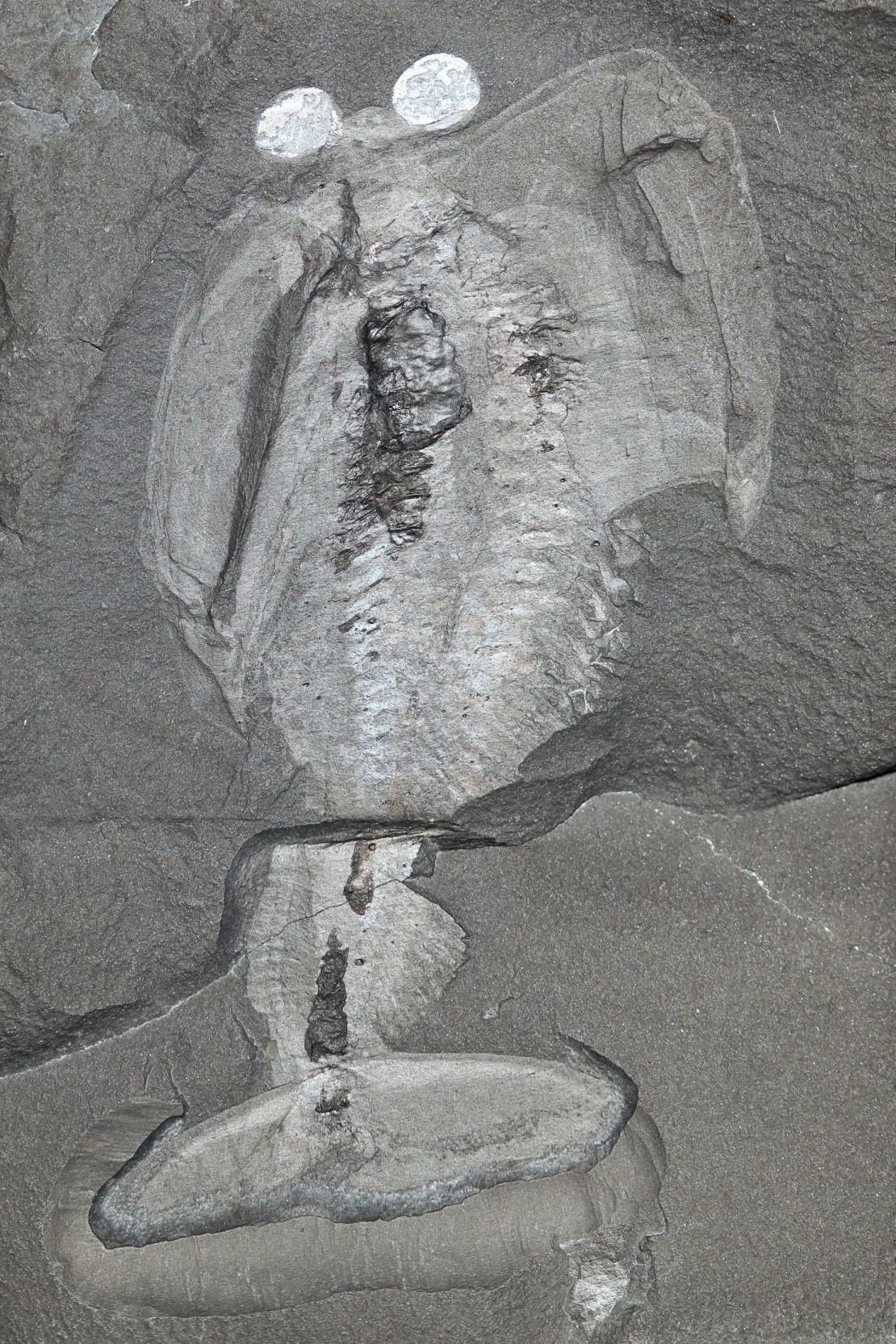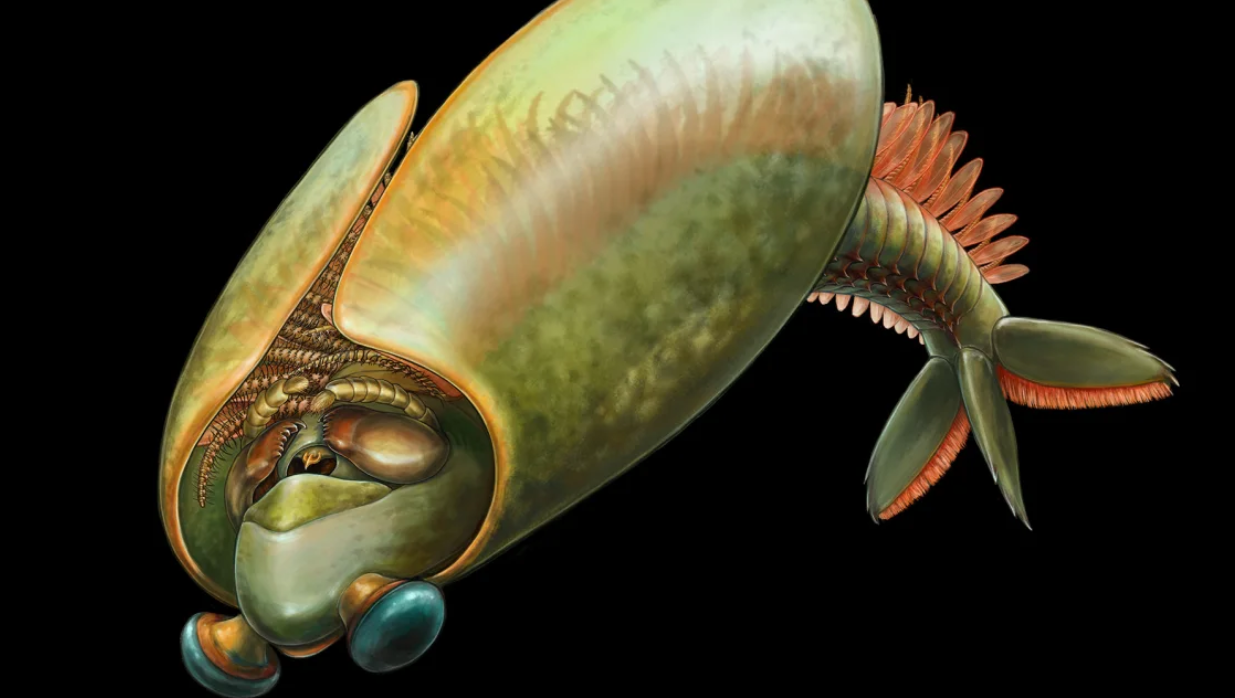
It swims backwards in the form of a sea reptile with a tail shape and a webbed body. It looks like a taco, but this taco has a bite to it.
Fossils of the extinct arthropod Odaraia alata were recently discovered, and for the first time scientists have discovered jaw-like structures called claws in Odaraia. This small pair near the mouth chews, holds and tears food. Any shell with a mouth like this is called a head.

The first crustaceans evolved in the oceans during the Cambrian period (541 million to 485.4 million years ago), including modern crustaceans, reptiles, and millipedes such as centipedes and centipedes. Arthropods help in cutting, tearing and grasping. The diversification of the mandible was so successful that more than half of all animal species have evolved, according to the Royal Ontario Museum. The identification of the Odaraia skulls solves a long-standing mystery about the animal’s prey and suggests that Odaraia is the earliest jaw in the arthropod lineage, researchers said in 24 July in Proceedings of the Royal Society B: Biology. science.
This species was described in 1912 from fossils found in approximately 505 million year old rocks in the Burgess Shale in British Columbia, Canada. However, these chapters are incomplete. Alejandro Izquierdo Lopez, lead author of the study, said scientists are not sure if Odaraia belongs to the Mandibridae family because head appendages are important for extinct arthropods. He conducted this research at the Royal Ontario Museum while completing his PhD in the Department of Ecology and Evolutionary Biology at the University of Toronto. In the new study, researchers looked at 150 fossils collected by the Royal Ontario Museum during expeditions from 1975 to 2000. new ones. “Only a small portion has been published before,” he said in an email. “We found chipped nails in at least 10 specimens, showing how difficult it is to find well-preserved nails.”

Previously preserved nails can only be seen through hard scars on other Odalaya specimens, the study authors said. Isquierdo-Lopez added that Odalaya’s new mouth was found to have “a strong, short, tooth-covered appendage.” “That’s what we expect from the head.”
Joanna Wolfe, a researcher at Harvard’s Department of Social and Evolutionary Biology, said their findings show how new fossils, even from well-known species, can be full of surprises.
“It’s important to look at species that were previously known, and in this case they (the study authors) have a lot of new things,” Wolfe said. “Sometimes, trends can only be seen on one sample, so you have to keep looking.”
Hairy legs to catch food
About 15 centimeters long, Odalaya gazes at its underwater habitat with large eyes on its stem. Its body is divided into many parts, and it has more than thirty pairs of legs. He wraps himself in what is called a tortilla shell, a tubular shield that surrounds Odalaya’s body, with his head extending forward and his tail behind. There are many tortilla-shaped arthropods called bivalves, “including modern arthropods such as clams and clams,” Wolf said.

The shell covered Odalaya’s limbs, preventing her from walking on the sea floor, according to the Royal Ontario Museum. In contrast, sea worm tacos move by swimming downwards, just as modern horseshoe crabs do.
The legs may not have been used for running, but they were important for catching food, such as in smaller Cambrian marine animals, the researchers said. When they examined the fossils, they found that the animals had stiff, hair-like structures called setae on their legs. These tiny prongs hunt for food, such as rows of baleen in a whale’s mouth that filter seawater and catch plankton.
“We think that the dragons between his legs are connected to create a web that captures food,” said Isquierdo Lopez. This feeding method is common to many modern crustaceans, which differ in the shape and length of the setae they use to catch food, Wolf said.
Other Mysteries of Mandibles One feature that surprised and surprised scientists was one that had never been seen in a Cambrian animal before: a single tooth-like structure between Odalaya’s mandibles. “Even if it’s compared to the modern mandible, we still don’t know what it is,” said Isquierdo Lopez. “But the side of the head can be used to chew food. This structure may have evolved into a similar form in centipedes or crabs, but we cannot provide further information at this time.
If more fossils are found, the function of these structures will become clear, and other unusual details of Odalaya will be revealed, such as the presence of three small eyes between two large eyes. Previous studies have briefly described this light-sensitive organ, but the researchers were unable to detect the missing cells through scanning.
“Although we could not look at these three faces in this study, we cannot completely exclude their existence,” said Izquierdo Lopez. “Future models will show us more complex heads than what we have now.”
Mindy Weisberger is a science writer and media producer whose work has appeared in Live Science, Scientific American, and How It Works magazines.